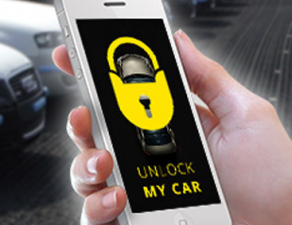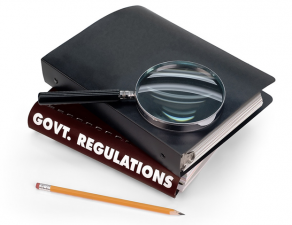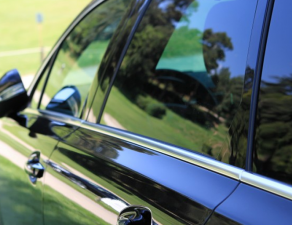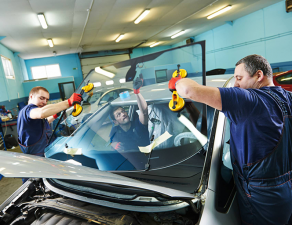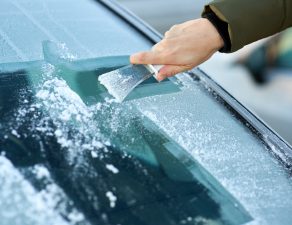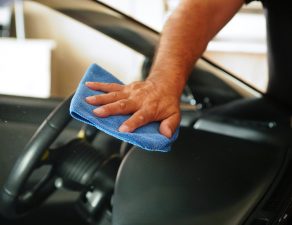It’s that time of year again–and we’re not talking about Christmas trees and hot cocoa. Black ice, snow storms, and towering drifts are just some of the hazardous conditions that winter drivers face in many parts of the country. For those who are new to the dramatic changes that this season brings, or for those who aren’t but continually find themselves in precarious situations anyway, you’ll need to make some adjustments to the way you drive.
Instantly Get Up to 3 Local Windshield Replacement Quotes
So if you want to avoid getting stranded or skidding off the road, keep these eight tips for safe winter driving in mind:
- Practice Makes Perfect
Those eight or nine months since the last of the snow melted can easily give you temporary amnesia about what you went through the previous year. So with the fall of fresh snow, you might want to practice your defensive driving in an empty parking lot. Choose a remote area and go over techniques like steering into a skid or leaving enough brake response time. Feeling the car go out of control in a safe environment is also an excellent way to minimize your anxiety in real road conditions. And what better way to relieve boredom on a drab January afternoon than heading for the closest church parking lot andmaking donuts?
- Proper Car Maintenance
At the beginning of the winter season, check your battery, windshield wipers, and tire treads. You’ll also want to top up the antifreeze (or coolant) in your radiator, add fuel de-icer to your tank, and switch to a window washer fluid with antifreeze. Although this doesn’t affect the drivability of your car, make sure your heater and defroster are in good working condition, too. It will make you a much more pleasant car-mate. And because plummeting temperatures may worsen an existing chip or crack, this is a good time to get your windshield repaired.
- Check the Weather Before Heading Out
Yes, it’s obvious. But how many times have you optimistically gotten on the road on a sunny winter day sure that leaving your parka behind was a good idea? So make sure to check the forecast along your route and especially at the destination. Look at a radar map to see how fast any potential storm is coming and from what direction. Even if you can’t avoid driving in bad winter weather, at least you will know to bring that parka.
- Refresh Your Winter Safety Kit
Somewhere in the back of your mind you may feel assured that you have your handy-dandy winter kit safely stowed in the trunk, but it behooves you to double check that you didn’t remove it to make room for the beach umbrella last summer. Your winter safety kit should include a tow rope, ice scraper, jumper cables, flares, flashlight, cat litter or sand for traction, blankets, retractable shovel, water, and non-perishable food like energy bars or trail mix. There’s nothing worse than ending a fun ski trip with a case of hypothermia when your car gets stuck in a snow-filled ditch.
- Don’t Be a Tailgater
First of all, it’s just bad manners. But more importantly, tailgating increases the chance of a rear-end collision, especially in slick winter driving conditions when your braking time is lengthened. In this world of overnight delivery, instant messaging, and drive-through coffee houses, it can be hard to slow down. You might get impatient that the car ahead of you is driving below the speed limit when you’re late for your meditation class, but remember that you will likely slam on the brakes in a reflexive move and wind up causing an accident.
- Avoid Using Cruise Control
Cruise control is a device that can make some road conditions much more pleasant, such as driving on a long stretch of open highway. But if the tarmac is snowy, rainy or icy, avoid using it or you may hydroplane and turn “cruise control” into “out of control.”
- Learn to Handle Your Car During a Skid
Speaking of “out of control,” always drive slowly and take your foot off the gas well ahead of curves. This will lessen your chance of needing to brake hard, which is the main thing that causes your vehicle to slide. Should you find yourself in a skid, steer gently in the direction you want to go, aiming for the closest empty lane of traffic. And remember that you need to apply slow, steady pressure to a vehicle with an anti-lock braking system rather than frantically pump the brakes and scream.
- Don’t Drive When Fatigued
Being tired reduces your response time and adds to the confusion already created by poor visibility, particularly when it is snowing, foggy, or the sun is low. You should always get enough sleep before you get behind the wheel in winter weather. And if you are taking a long trip, either pull over every few hours or rotate drivers to make sure that you remain alert.
There are a lot of additional challenges when you drive in winter weather. The light is harsh enough even without the additional problems created by snow glare, and when you factor in icy roads and holiday traffic, you have a number of potential hazards on the road. Good preparation, mental alertness, and careful driving techniques can minimize these risks, though, keeping you safe and cozy throughout the cold season.

